Some trees point left, others point right.
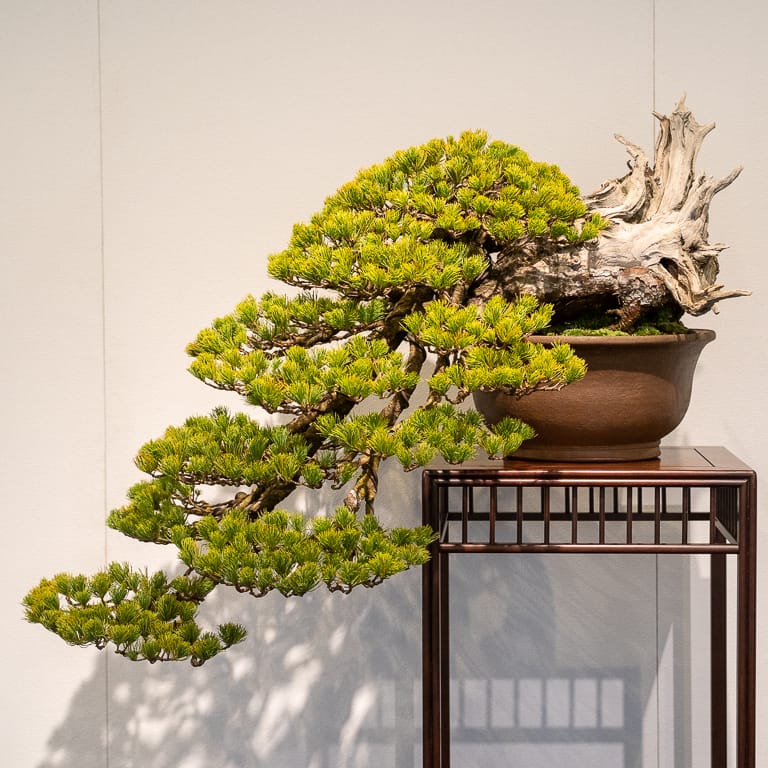
White pine that points to the left
(This and subsequent photos are from the 2020 Kokufu exhibition)
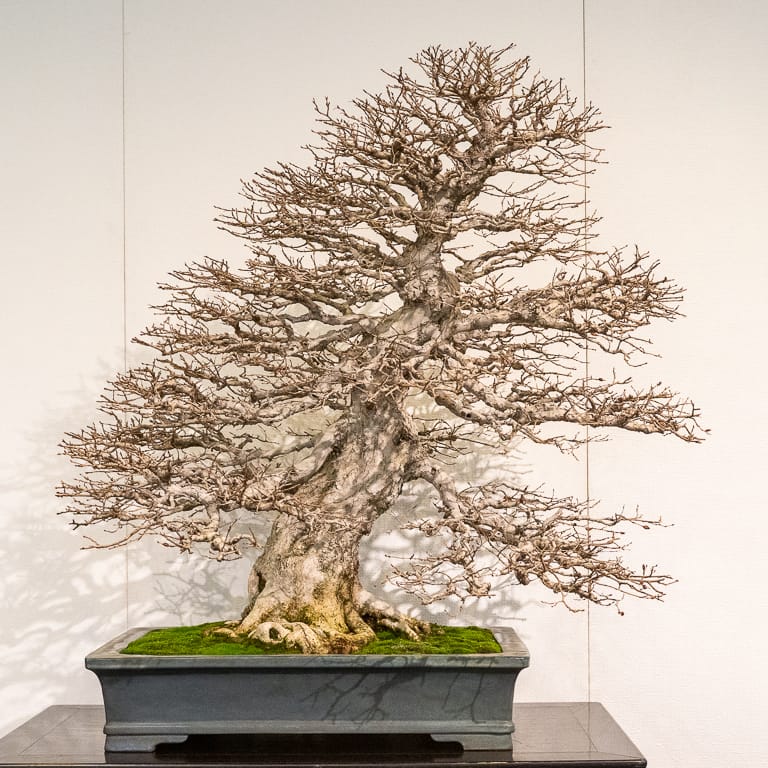
Korean hornbeam that slants to the right
There are a number of ways to indicate direction or flow in bonsai. In the above examples, the line of the trunk (from the base to the tip) strongly leads to one side (the pine to the left, the hornbeam to the right).
For deciduous trees displayed in winter, we can clearly see which way the trunk or trunks point.
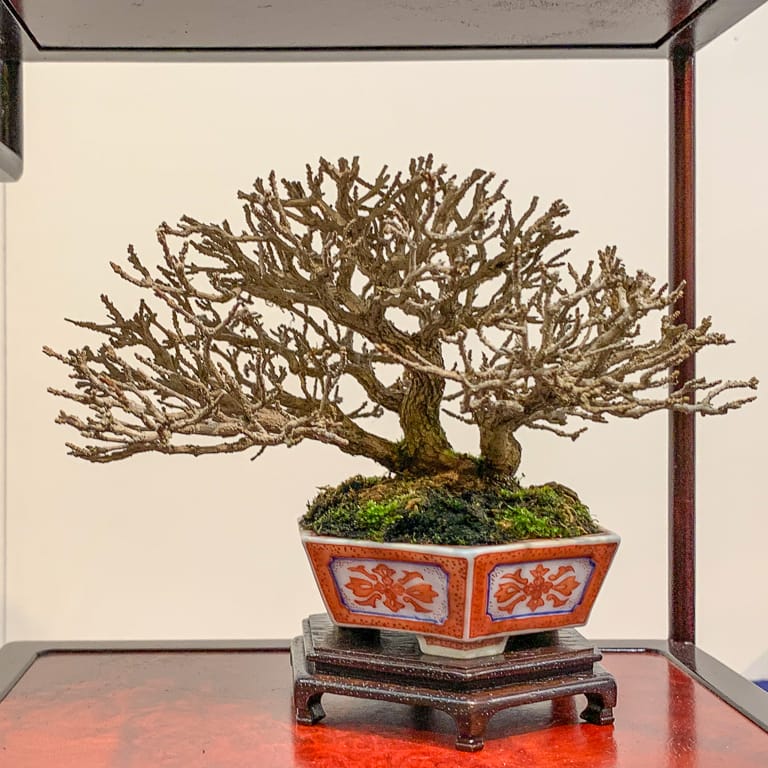
Premna – the main trunks point to the left
In cases where the trunk meanders from side to side – a common trait of informal upright bonsai – the top of the trunk can indicate direction.
The root over rock trident maple below doesn’t have strong directional movement, but the top third of the trunk points left. As a result, we say the tree points to the left.
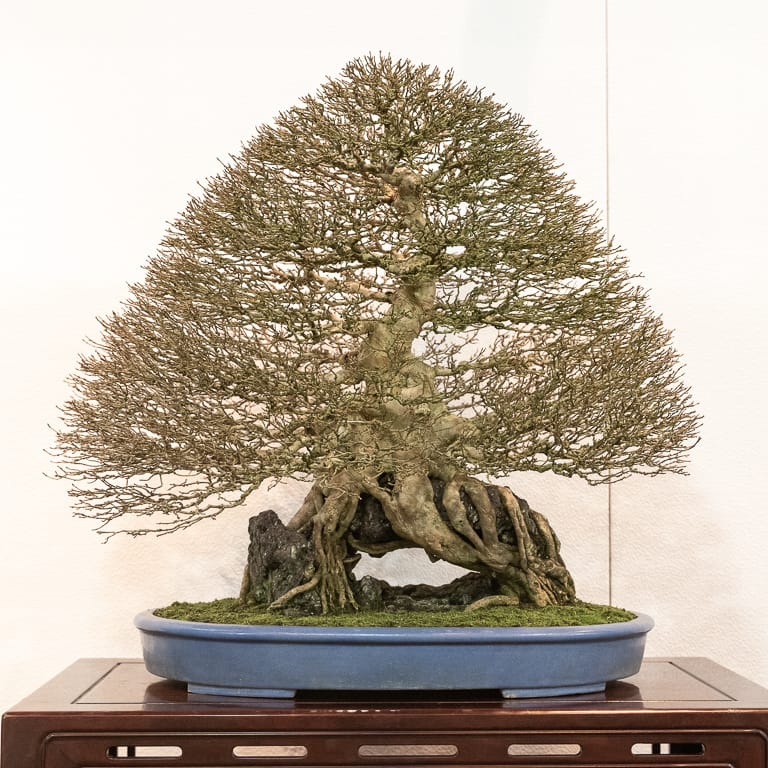
Root over rock trident maple that points to the left
Other deciduous trees have virtually no indicators of movement in the trunk, silhouette, or branch structure. That’s the case for the broom style zelkova below.
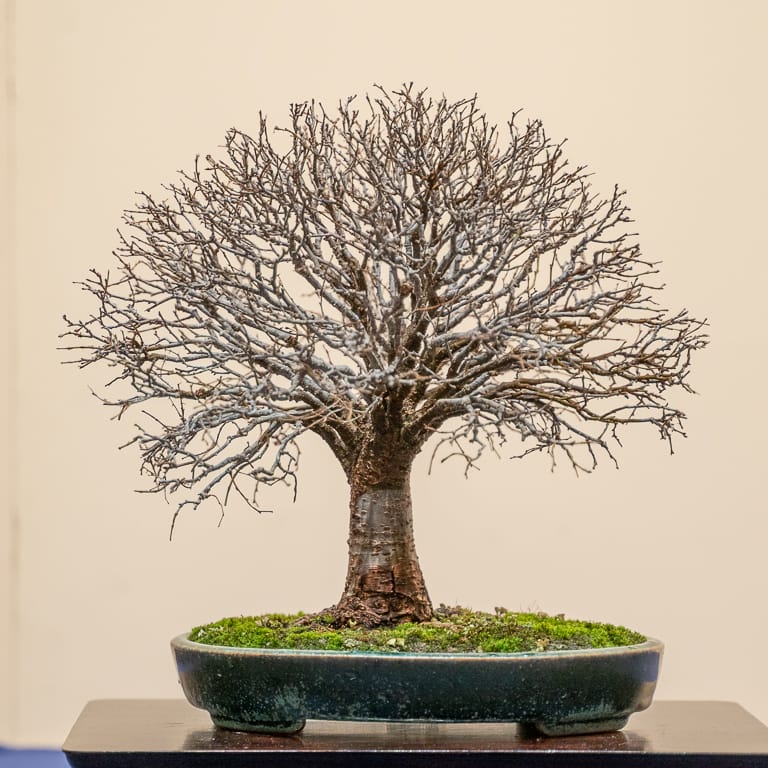
Zelkova – which way does the tree point?
In this case, the zelkova points to the right. The owner potted the tree on the left side of the pot which opens up space on the right.
Branch structure, the line of the trunk, and the silhouette are used to determine direction in conifers too. For trees with no visible structure, placing the bulk of the foliage to the left or the right can indicate direction.
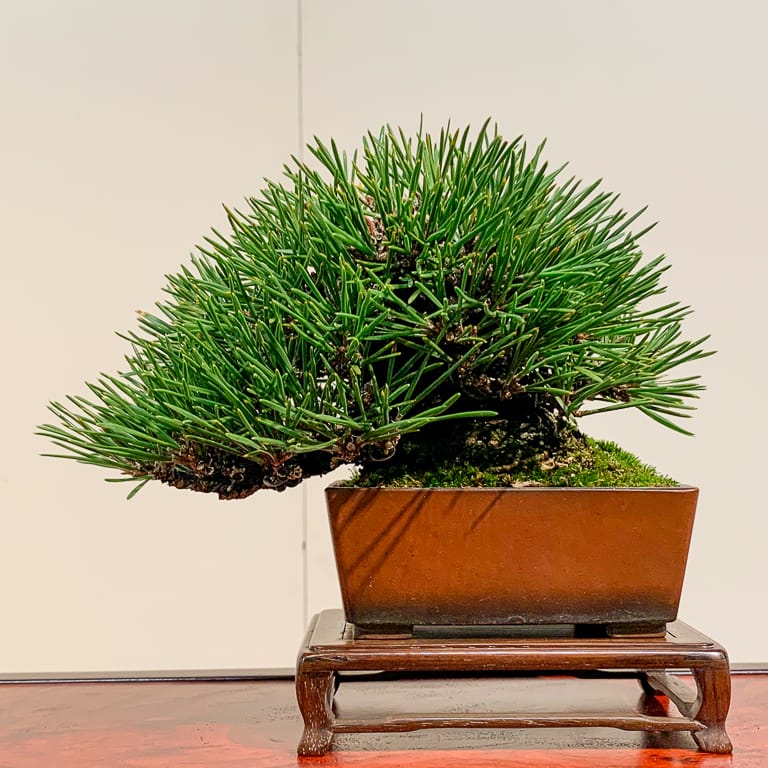
Black pine with more foliage on the left than on the right – the tree points to the left
A strong branch or branches can also indicate direction.
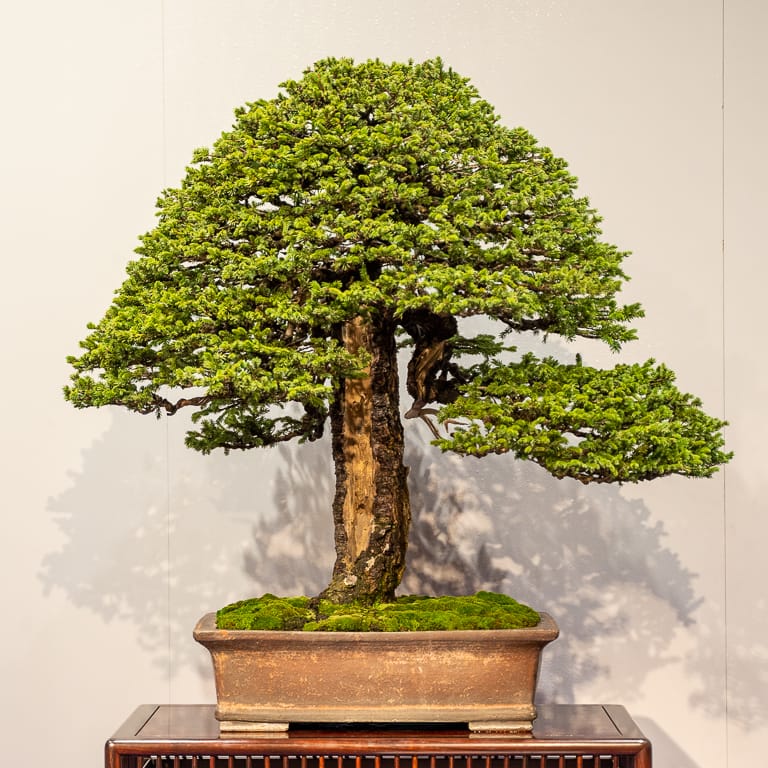
Ezo spruce with prominent branch that points right
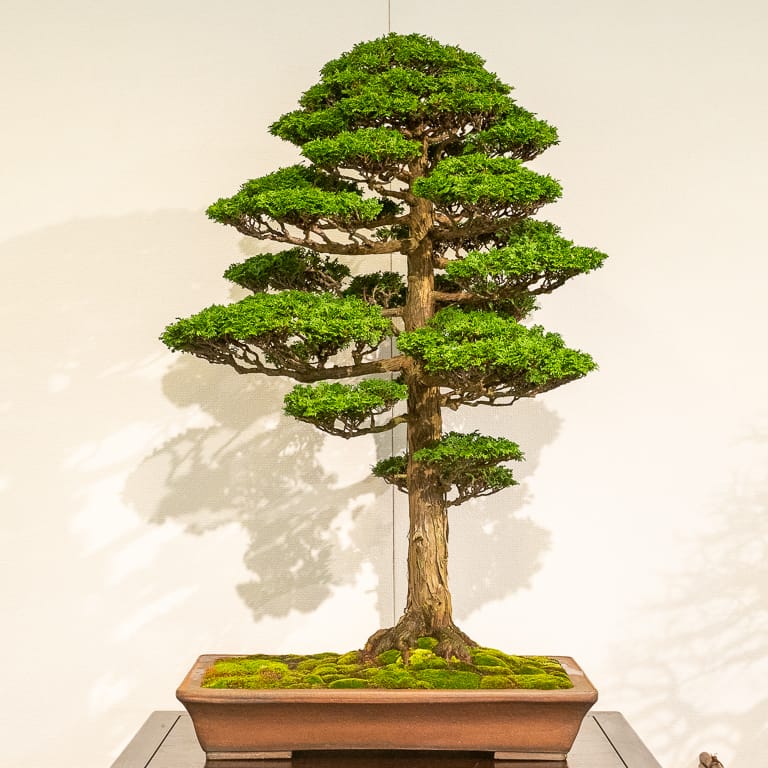
Formal upright hinoki with prominent branches that point left
When some aspects of a tree point left and others point right it can be hard to determine the overall flow. For the pine below, the lower section of the trunk and the most prominent branch move strongly to the left. The silhouette, however, points to the right.

Black pine
Together, the lower section of the trunk and the prominent branch on the left make a good case for the tree pointing left (which is how the tree was displayed, with the accent on the left).
Here’s a similar example. The trunk of the yew below starts left but moves overwhelmingly to the right from there. As a result, the tree points right.
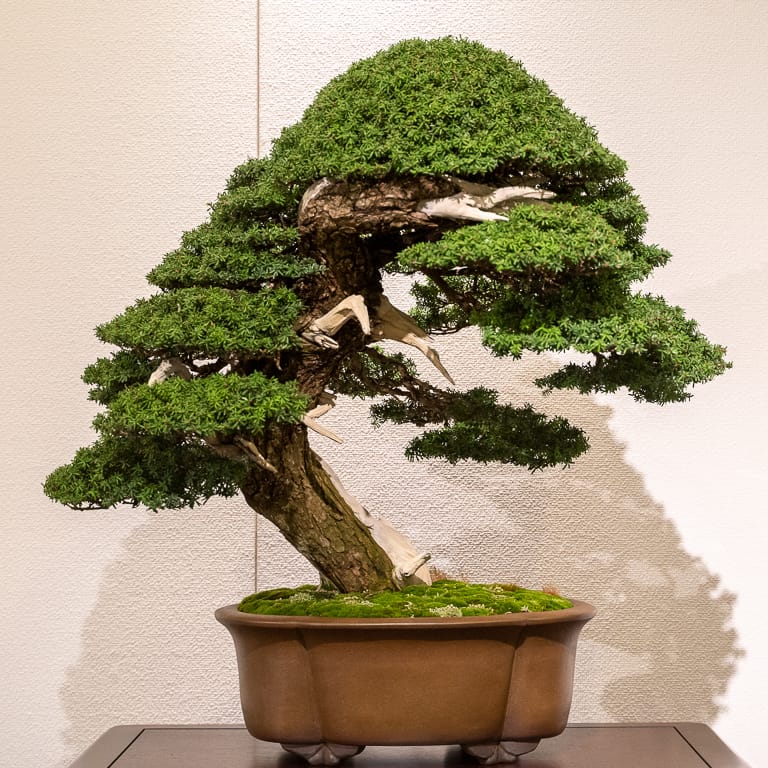
Japanese yew
Collected bonsai often have wild character that can lead in any number of directions. In these cases, we often rely on the foliar design to indicate direction.
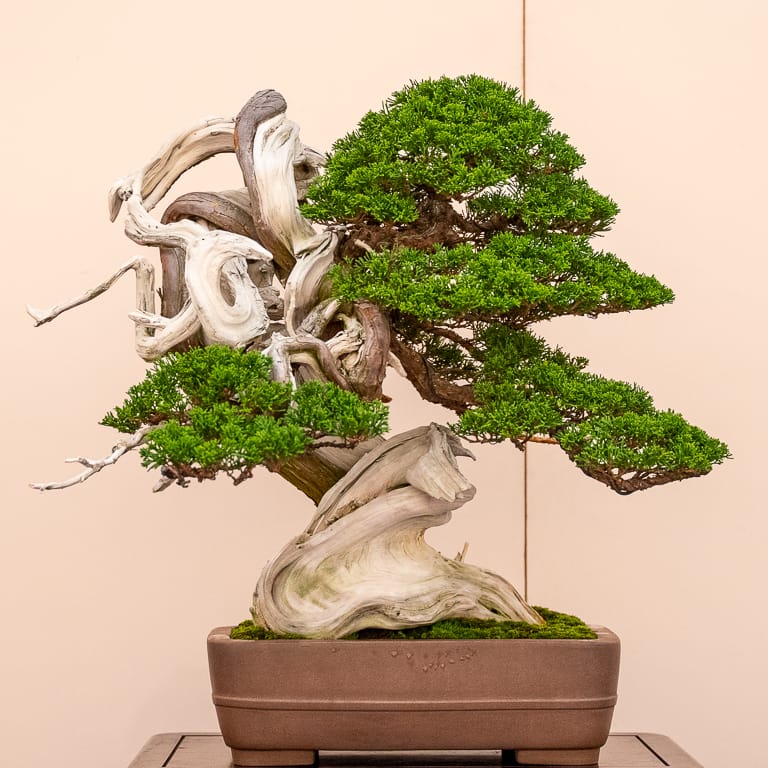
Shimpaku juniper that points right
The Kokufu prize-winning white pine below is a great example of conflicting directional cues. The apex is directly over the base of the trunk so there’s no inherent lean to the trunk.
The open canopy and pointy jin at lower right often suggest rightward movement, but the heavy foliage of the first branches on the left suggest leftward movement and ultimately lead the tree to point left.
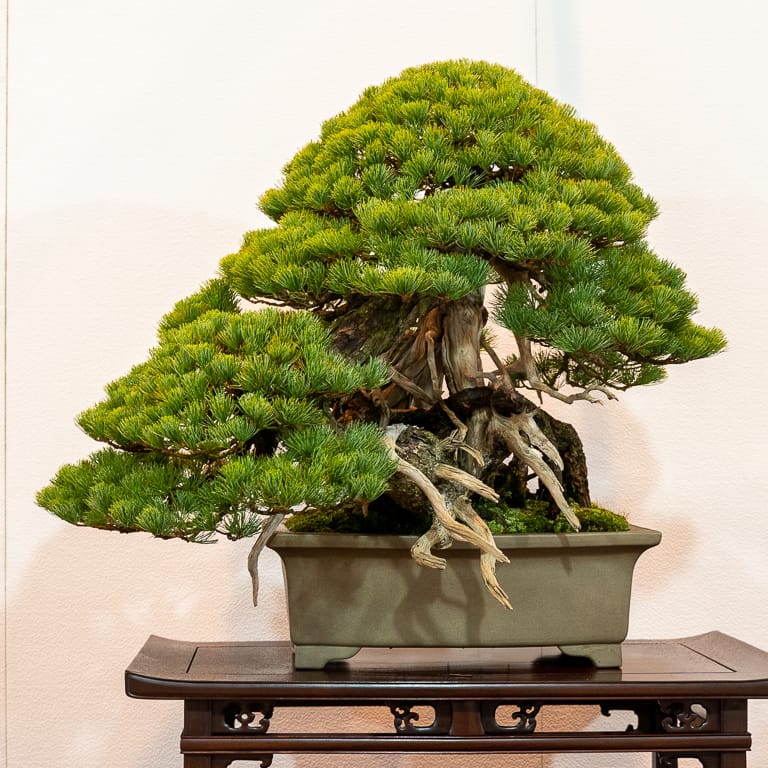
White pine that points left
Why focus on which way a tree points? One reason is to refine our design skills. If the flow of our trees is ambiguous, it may be an opportunity to make refinements that strengthen the flow in one direction or the other.
Determining flow is also a key aspect of bonsai display. Understanding which way a tree points, and how strongly it points, can help us set up displays that convey our artistic ideas. I’ll say more about display in future posts.
Subscribe to Bonsai Tonight
New Posts Delivered Every Tuesday and Friday
Ken wassum says
Great post Jonas.
Chris Cochrane says
Thanks for a great presentation on the direction of flow for bonsai. For me, the last example is a questionable choice. The direction of flow for a bonsai should not be ambiguous, but this one is. The apex of the bonsai is slightly to the right of the center. The planting center of the trunk is undetermined. I find that the empty space to the right of the trunk as well as the strong diagonal jin falling to the right (in addition to the placement of the apex) arguably overweigh the greater foliage mass toward the left in determining the direction of flow. The light source throwing shadows slightly to the left further leads to the impression of the this bonsai facing toward the right.
Jonas Dupuich says
Thanks, Chris! The last tree is interesting because it has the right-suggesting features you mention while maintaining heavy foliage on the left. If you’re curious, here’s a short video of the tree close-up – it was one of my favorites at the show: https://www.youtube.com/watch?v=7riYDT22Lbg
Gerald Rainville says
Have you found patterns in artists, domiciles, language, writing styles, culture, or other patterns that cause one to favor a flow direction ?
Derek Delisi says
Love this question Gerald! I find myself visually preferring and creating trees that move to the right. Speaking strictly in terms of what the experience of that ‘first glance’ feels like to me, that first JWP above doesn’t look like it’s going ‘left’ to me, it looks like it’s going ‘backwards’. I’m overstating things here, but it feels almost as if it were hanging off the trunk of a car, instead of the hood, with car still move forward (of course the larger context of the display normally corrects this for me).

Jonas Dupuich says
The cascade is interesting as the top of the canopy opens to the right suggesting some rightward movement. It’s a perfect opportunity for refining the flow with wiring!
Jonas Dupuich says
Great question Gerald! I’ve heard ideas on the topic but have yet to see any verifiable data or statistics about it. I’ve found that some individuals’ collections are really lopsided with more trees flowing one way than the other.
Have you found any patterns in your experience?
Gerald Rainville says
Some decades ago I felt that the direction of the eye when we read affects the preferred direction of flow. Japanese reading right to left and English left to right. I also noticed that working left-handed vs right-handed can skew the % of trees flowing one way or the other, particularly when setting trunk structure on young trees.
Roger says
Why does it matter which way the tree points?
Jonas Dupuich says
Hi Roger – the main two reasons that come to mind are the two I mentioned at the end of the post: to inform tree design (what should the silhouette look like, how long should the branches be) and to inform the display (does the accent plant go on the left or the right).
Gerald Rainville says
Subconscious flow direction preference could affect show Judging points. As well as value. At shows, I often watch the eye of the viewer to see where it goes and the initial facial response. This is something I thought about and was paying attention to in the ’80s. I do consciously tend to push my trees to the right when working in the West.
Amin Younes says
In my view, the Ezo spruce is the most ambiguous. Upon close inspection, the trunk points ever so slightly leftward (I confirmed on my computer that the pot and table are perfectly horizontal, but the trunk definitely curves ever so slightly left). I think this tree should be tilted a few degrees to the right in order to remove the ambiguity.
The Zelkova is quite ambiguous too, but the higher density of branches on the right side (particularly near the trunk) clearly indicates a rightward direction.
Jonas Dupuich says
Have you seen the spruce when it was younger? The flow was very clear 86 years ago.
https://bonsaitonight.com/2020/02/18/a-historic-spruce-at-the-94th-kokufu-exhibition/
Sam Hurlbut says
About the Black pine just above the Japanese yew. I can’t help myself, but I see the out line of a stylized Samurai facing to the right. I see a chin, a nose and a brow or the front edge of a helmet. To the left, I see the sweeping line of the back of the helmet. Love the post.